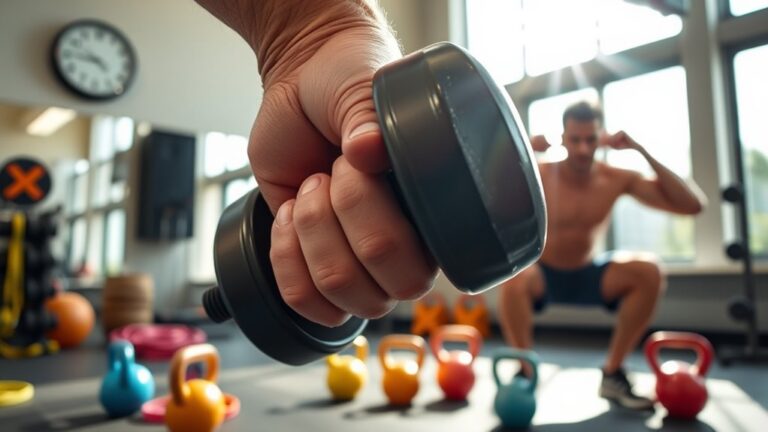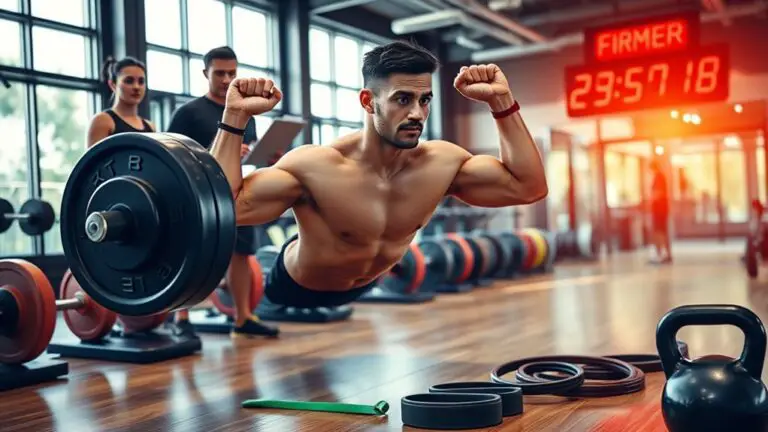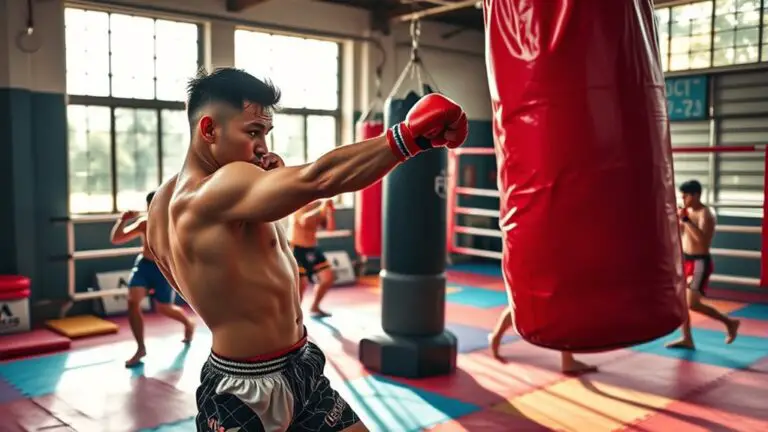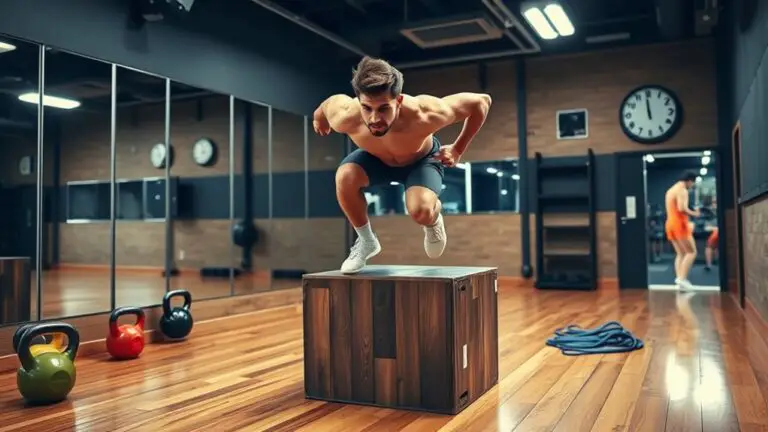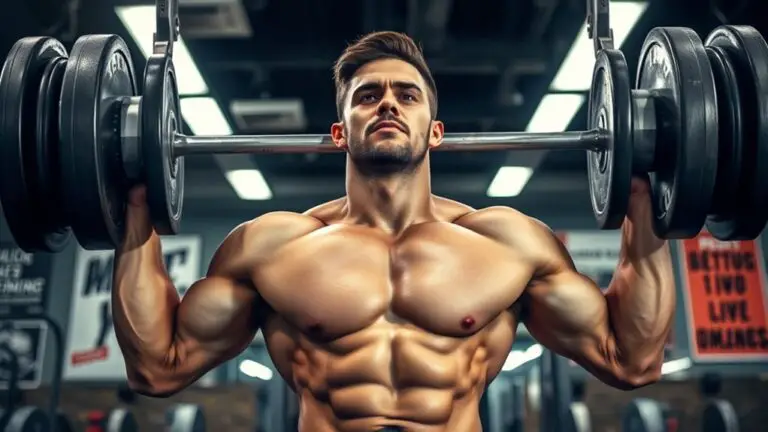The Best Gym Workouts for Brazilian Jiu-Jitsu Athletes
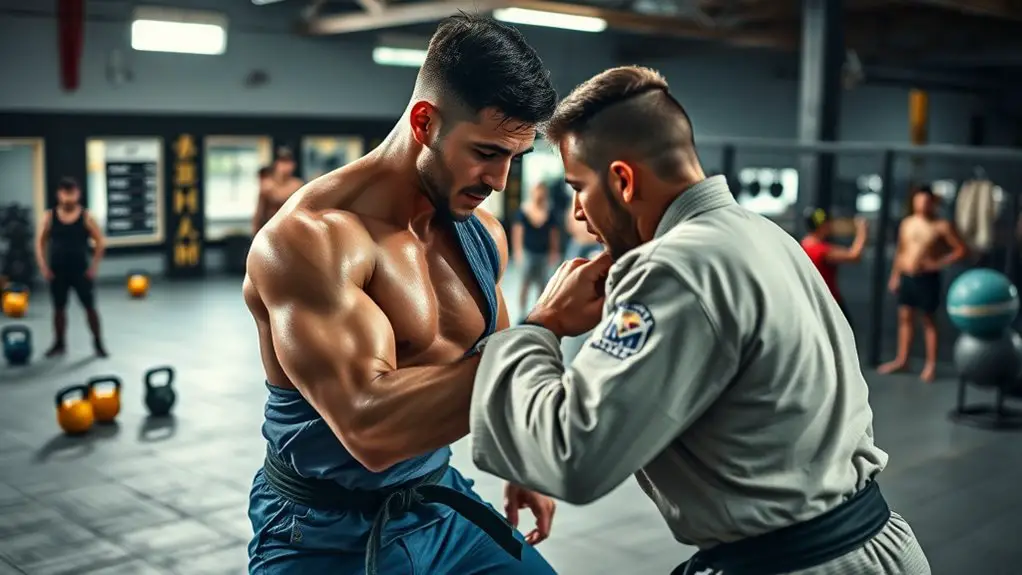
The best gym workouts for Brazilian Jiu-Jitsu athletes mix strength, endurance, flexibility, agility, and recovery. Focus on powerlifting moves like squats and deadlifts to build foundational strength. Incorporate cardio intervals and circuit training to boost your stamina. Don’t forget flexibility routines, including dynamic stretching and yoga, to enhance mobility. Agility drills like lateral shuffles can improve your quick movements. With the right techniques, you can elevate your training and performance on the mats. There’s more to explore!
Strength Training Exercises for BJJ
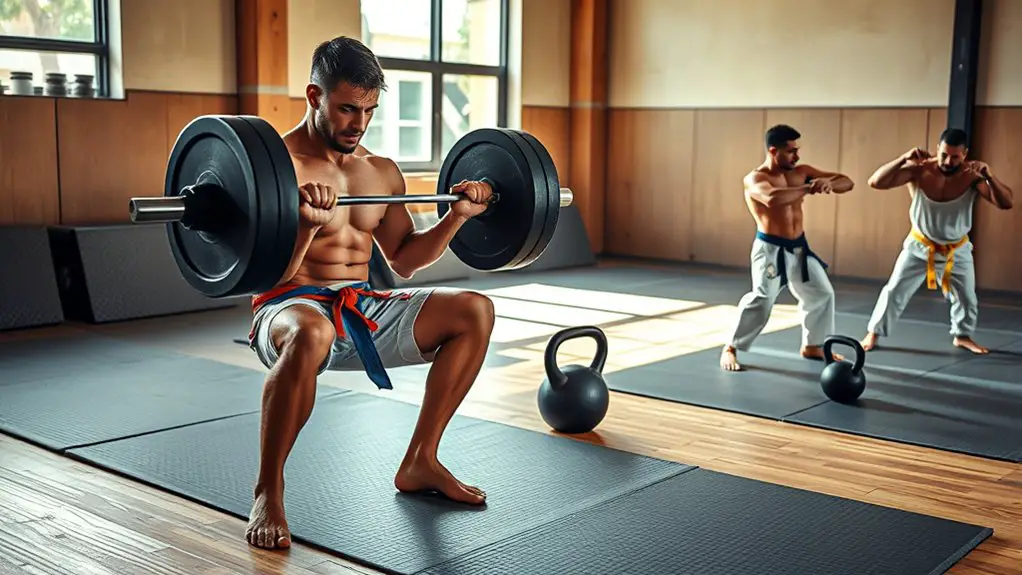
When you’re training for Brazilian Jiu-Jitsu (BJJ), incorporating strength training exercises is essential, as they can greatly enhance your performance on the mat. One major advantage of strength training is the powerlifting benefits it offers, such as increased muscle strength and explosive power. Exercises like squats, deadlifts, and bench presses can help you develop the foundational strength needed for grappling.
Additionally, focusing on core stability is vital for maintaining balance and control during your rolls. Incorporate exercises like planks, medicine ball throws, and rotational movements to build a strong core. A stable core not only improves your overall strength but also helps you execute techniques more effectively, reducing the risk of injury. By combining strength training with your BJJ practice, you’re setting yourself up for success, making you a more formidable opponent on the mat. So, don’t overlook the importance of strength training in your BJJ journey! Including variations like goblet squats can provide effective workouts while minimizing knee strain.
Endurance Workouts to Enhance Stamina
While strength training builds the muscle needed for grappling, endurance workouts are just as important for BJJ athletes looking to enhance their stamina on the mat. Incorporating endurance workouts into your routine helps you maintain energy during long training sessions and matches. Here are some effective methods to boost your endurance:
- Cardio Intervals: Alternate between high-intensity bursts and low-intensity recovery periods to improve your cardiovascular fitness.
- Circuit Training: Combine strength and endurance by performing a series of exercises back-to-back with minimal rest.
- Running or Cycling: Engage in steady-state cardio sessions to build your aerobic base, essential for prolonged activity.
- Rowing: This full-body workout not only increases your stamina but also mimics the pulling motions used in BJJ. Additionally, incorporating skipping rope into your routine can provide an effective way to elevate heart rate and improve cardiovascular health.
Flexibility Routines to Improve Mobility
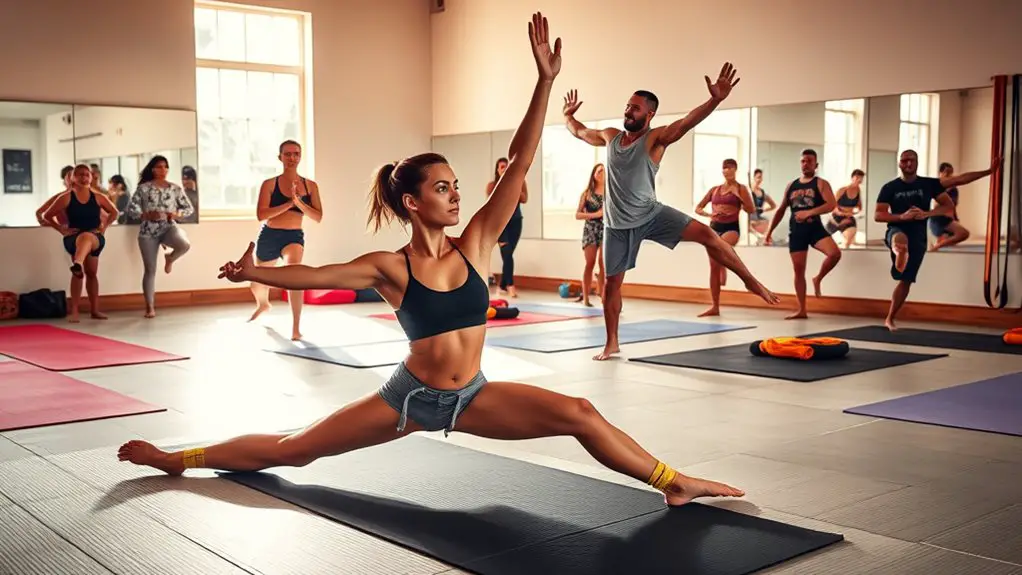
To excel in Brazilian Jiu-Jitsu, improving your flexibility is just as vital as building strength and endurance. Incorporating flexibility routines into your training can enhance your mobility on the mat, allowing for smoother movements and better technique execution. Start your workouts with dynamic stretching; think leg swings, arm circles, and torso twists. These movements warm up your muscles and prepare your body for action.
After your training session, dedicate time to static stretching or yoga poses to maintain flexibility. Poses like the pigeon, downward dog, and butterfly can greatly improve your hip and lower back mobility, essential areas in BJJ. Aim for at least 15-20 minutes of focused stretching post-workout. Not only will this routine help prevent injuries, but it’ll also contribute to your overall performance. Remember, a more flexible body can mean a more effective grappler.
Agility Drills for Quick Movement
Agility is essential in Brazilian Jiu-Jitsu, as it allows you to respond quickly to your opponent’s movements and maintain control during exchanges. Focusing on agility drills can greatly enhance your lateral movements and improve your reaction time, making you a more formidable opponent on the mat. Here are some effective drills you can incorporate into your training:
- Lateral Shuffles: Move side to side in a squat position to build strength and speed.
- Cone Drills: Set up cones and sprint in various patterns, emphasizing quick directional changes.
- T-drills: Create a T-shape with markers and practice sprinting to each point to improve your footwork.
- Agility Ladder: Use an agility ladder to work on foot speed and coordination through quick, precise movements.
Recovery and Conditioning Techniques
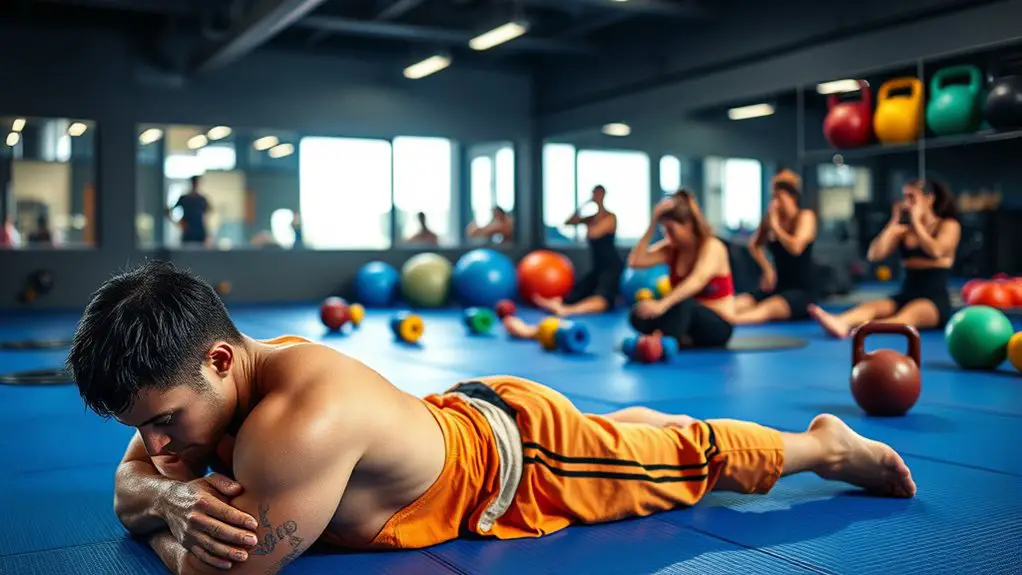
Improving your agility on the mats is just one part of becoming a well-rounded Brazilian Jiu-Jitsu athlete. Recovery and conditioning techniques play an important role in your performance. Incorporating active recovery days into your routine can help maintain your fitness while allowing your body to heal. Activities like light jogging or swimming can enhance blood flow and reduce soreness.
Foam rolling is another effective method for muscle recovery. It helps release tightness, improve flexibility, and prevent injuries. Here’s a quick overview of some essential techniques:
| Technique | Benefits | Frequency |
|---|---|---|
| Active Recovery | Enhances circulation | 1-2 times/week |
| Foam Rolling | Reduces muscle tension | After workouts |
| Stretching | Improves flexibility | Daily |
| Hydration | Aids recovery | Throughout the day |
| Rest Days | Prevents overtraining | 1-2 times/week |
Integrate these techniques to maximize your training results!
Frequently Asked Questions
What Should I Eat Before a BJJ Workout?
Before your BJJ workout, it’s essential to fuel your body right. Opt for pre-workout snacks like a banana, yogurt, or a granola bar to give you that energy boost. Don’t forget about hydration strategies—drinking water or an electrolyte drink can keep you performing at your best. Aim to eat about 30-60 minutes before training, so your body has enough time to digest and get ready for an intense session on the mat.
How Often Should I Train for Optimal Results?
When it comes to training frequency, you’ve got to find that sweet spot. Aim for three to five sessions per week, balancing intensity with recovery importance. Consistent training will help you improve, but don’t forget to listen to your body. Giving yourself adequate time to recover is essential for avoiding burnout and injuries. Remember, it’s not just about hitting the mats; it’s about making steady progress over time.
Is It Necessary to Do Cardio for BJJ?
It’s definitely beneficial to incorporate cardio into your training for BJJ. Cardio helps improve your endurance, which is essential during long rolls or matches. When you focus on endurance training, you’ll find you can maintain your performance even when you’re exhausted. Plus, the cardio benefits extend beyond the mat, enhancing your overall fitness. So, don’t underestimate the power of a good cardio routine; it can greatly enhance your BJJ game.
What Supplements Are Beneficial for BJJ Athletes?
Imagine a tree endeavoring to reach the sky; its roots need nourishment to grow strong. For BJJ athletes, supplements can serve as those roots. Performance enhancers, like creatine, can boost your strength and endurance, while recovery supplements, such as BCAAs and omega-3s, help repair and reduce inflammation after training. By incorporating these into your regimen, you’re not just feeding your body; you’re cultivating resilience, ensuring you’re always ready for the next challenge.
How Can I Prevent Injuries During Training?
To prevent injuries during training, focus on proper warm-up techniques. Start with dynamic stretches to increase blood flow and flexibility, reducing the risk of strains. Incorporate mobility exercises to enhance joint stability. Always pay attention to your body; if something feels off, don’t push through. Regularly cross-train and include strength work to support your BJJ practice. Finally, listen to your coach’s advice on technique to avoid unnecessary injuries.
